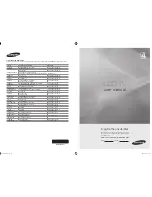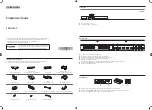
MG5.1E
6. SMALL SIGNAL PANEL
45
6.6 HIP, I/O select, Video processing
Personal notes
Figure 6-9
CL 86532047_019.eps
051098
Ext 1
read_status 1
Tuner
TOPIC
FBX
PROC
IF
GD
rgb2
FBL2
FBL1
rgb1
CVBS main
Main
7501/TDA9320H
C
Y
TXT
HIP
PIP
C
Y
C
Y
(Easylink)
Easylink
front_ detect
IIC
OTC
Ext 2
read_status 2
Ext 3
Front
HOP
proc
COMB
Peaking
set_rgb_main
Comb control
Interface
Video processing
In the HIP there is video identification but this is not used. The
sandcastle-pulse of the HIP will not be used for
synchronisation. The HOP will generate synchronisation signal
derived from the feature box-(Picnic)signals. If a VCR is
connected, there is also an automatic correction for
macrovision. This is active for the external sources and the
presets 0, 90-99. The Y/C switch in the HIP is controlled by the
HIP itself (no external voltage). When a PAL- or NTSC-signal is
received then the Y/C from the combfilter will be used and when
SECAM is received, this will be processed internally. The comb
filter has to be switched for PAL/NTSC by two lines: SYS1/
SYS2 (pin 25 and 27 of the HIP). The voltages depend on the
colour system that is received. The combfilter needs the
subcarrier frequency as sample clock. That is why the
subcarrier is coming out on pin 30 of the HIP.
The truth-table for colour standard as function of SYS1/SYS2 is
described:
colour standard
SYS1
SYS2
PAL-M
LOW
LOW
PAL-B/G/H/D/I
LOW
HIGH
NTSC-M
HIGH
LOW
PAL-N
HIGH
HIGH
















































